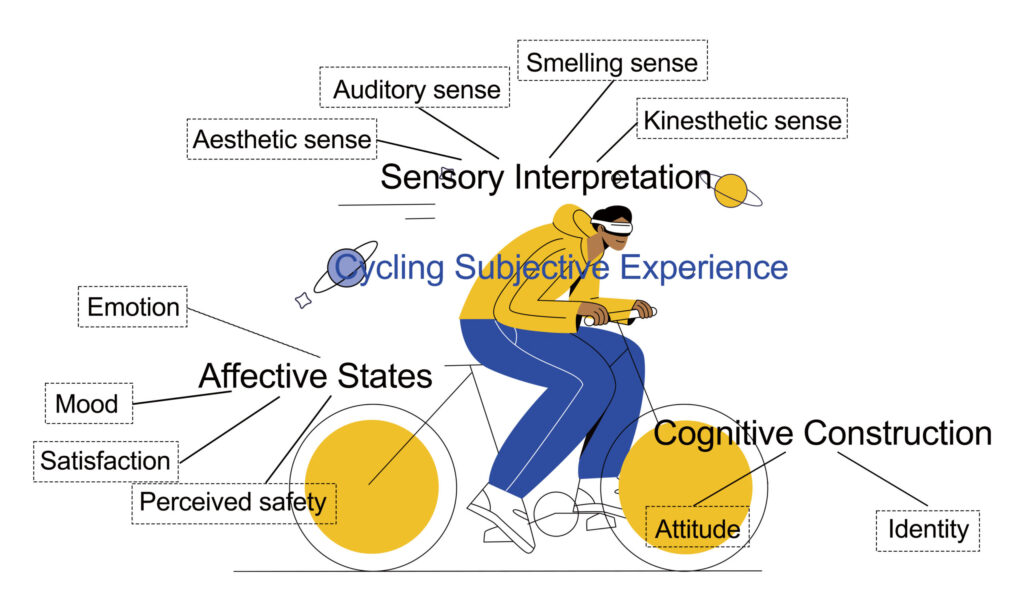(4 minute read)
There is growing consensus that cycling has a positive impact on social and ecological sustainability. Many cities and urban regions have articulated ambitious cycling policies to encourage growth in cycling rates. Likewise, academic attention for cycling by transport planners, geographers, and historians has boomed in recent years. However, the effect of smart innovations on the larger cycling system, urban resilience and liveability has yet to be studied systematically.
To this end, four “living labs” were co-created in four Dutch cities in tandem with practitioners (i.e. local/regional authorities, innovators and entrepreneurs). By monitoring and evaluating these living labs, valuable lessons about future cycling innovations unfolded – especially about the potential and limitations of the living lab approach.
Reflection 1: challenges of living labs
Living lab experimentation is not only about learning about an innovation (such as the desirability and impact of cycling innovations), but also about understanding the processes of experimentation. An important success factor of living labs is to align levels of knowledge and expectations about experimentation processes across organizations. We quickly learned that the phasing and development of a PhD research project is fundamentally different from the implementation process of a living lab, in which the dynamics of multiple actors and interests create high levels of uncertainty.
Having partners from different backgrounds, roles and disciplines also posed challenges of understanding each other’s language and logic. Practitioners tended to struggle with learning from academics, as the latter were working on more fundamental questions that may be less relevant for the daily practice of local governments and vice versa.
Reflection 2: including existing cyclists
Current cycling policies, planning and innovations have a strong tendency to focus primarily on increasing the attractiveness of cycling for people who do not currently cycle. Typically, policies and innovations that try to convince people to get out of their cars and on a bicycle come with the unstated premise that people who drive will change their behaviour when they see new infrastructure, new monetary incentives, or new studies on the health benefits of cycling. Such a focus distracts from paying attention to the critical role of people who already cycle in sustaining and promoting a transition towards a more sustainable mobility system.
Rather than focusing exclusively on people who drive and assuming that any cycling investment that might lead to a change in their behaviour would be equally appreciated by existing cyclists, an approach that focuses on existing cyclists takes seriously the needs of people who have already made the choice to travel sustainably by creating policies that support them directly.
Reflection 3: the conceptual curb
Metaphorically speaking, we found that the cyclist travels along a boundary that is a ubiquitous feature of every street: the curb. The curb is the clear physical boundary that divides the sidewalk from the street; the people who walk from the people who drive. It represents an invisible boundary between the logic of walking and the logic of driving a car. While we found that practitioners themselves are aware of the limitations of the ‘traffic mode’ of thinking, their ability to design bicycle infrastructure as social spaces is limited by requirements of institutions and funding mechanisms that they operate in.
This shows us that even in the case of dedicated cycling infrastructure with no requirement to accommodate cars, adherence to strict vehicular parameters is still reflected existing design practices. When considering smart innovations, we should keep in mind that cyclists, like pedestrians, are already capable of smartly negotiating among themselves and that technology should complement, and not detract, from our existing innate ability to interact with others.
Reflection 4: the politics of cycling innovation
What exactly are smart cycling futures? In our work, we analysed descriptions of smart cycling innovations in order to understand what kind of futures are lurking behind promises of making cycling faster, safer, easier and more fun.
Thus, we drew attention to the politics of smart cycling futures, which open some opportunities but also foreclose others. Choices for implementing particular smart cycling innovations in the present inevitably leads us to transformation of cycling practices, subjectivities and meanings of cycling – and we call for more reflexivity on the consequences of those transformations. We were forced to confront the possibility that we had contributed to the dominant view of the bicycle as just another mode in the fleet of smart mobility modes. Could such pragmatic research strategies partly foreclose a future where the humble bicycle acts as a true alternative to predominant discourses around “smart mobility” for our urban mobility futures?
Continuous individual and collective reflection on the role of the researcher in the project as a facilitator and (explicitly or implicitly) an agenda-setter in transdisciplinary projects is key for leveraging the value of such projects both for academic research and for society.
To cite the academic article: Te Brömmelstroet, M., Nikolaeva, A., Nello-Deakin, S., Van Waes, A., Farla, J., Popkema, M., Van Wesemael, P., Liu, G., Raven, R., De Vor, F., Bruno, M. (2020). Researching cycling innovations the contested nature of understanding and shaping smart cycling futures. Transportation Research Interdisciplinary Perspectives. https://doi.org/10.1016/j.trip.2020.100247



